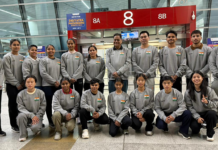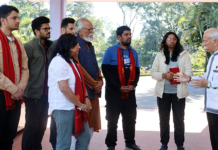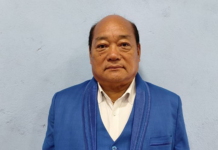[ Taba Ajum ]
ITANAGAR, Sep 20: Though the central government recently claimed that Chakma-Hajong refugees will only be given citizenship rights and not other rights, the Supreme Court judgment in the said case makes it clear that Chakmas and Hajongs will not require Inner Line Permit (ILP) to enter Arunachal Pradesh.
“It also stands recognized by judicial decisions that they (Chakma-Hajong refugees) cannot be required to obtain any ILP as they are settled in the state of Arunachal Pradesh,” read the apex court order.
Further, the SC directed to complete the process of granting citizenship to Chakmas and Hajongs preferably within three months. The apex court judgment has opened up the possibility of refugees claiming land and other rights, including APST status in the future.
Once granted citizenship rights in Arunachal Pradesh, the Chakmas will become one of the largest ethnic groups in the entire North East region.
They already have presence in states like West Bengal, Assam, Meghalaya, Mizoram, Tripura and Delhi. In fact, in Mizoram and Tripura, the Chakmas are listed under schedule tribe and enjoy all the benefits.
The total Chakma population of Mizoram is estimated to be more than 100,000. The area under Chakmas has been granted autonomy in the name of Chakma Autonomous District Council.
Chakmas are now reportedly demanding that autonomous council be declared a union territory, named Chakmaland.
In Tripura, as per the 2011 census, the Chakma population is around 80,000, but actual population is said to be more than one lakh. They have ST status and are considered to be a very influential tribe in the state.
There are two Chakma MLAs in Mizoram and one in Tripura assembly.
Coming back to Arunachal, the population of Chakmas and Hajongs is estimated to be around one lakh, but locals in Chakma inhabited areas allege that their population is more than two lakh and with each passing year, the population is growing.
It is believed that several Chakmas from other NE states and also from Chittagong Hill Tract in Bangladesh are migrating to districts like Namsai and Changlang due to availability of vast forest area. In another five years, if the same trend of migration continues, Chakmas are expected to be become the largest group in Arunachal.
The Chakmas/Hajongs are settled in four assembly constituencies of the state, that is, 49 Bordumsa-Diyun and 50 Miao (ST) in Changlang district; 46 Chowkham (ST) in Namsai district and 14 Doimukh (ST) in Papum Pare district.
Some of them have already been enrolled as voters and after the granting of citizenship rights, majority of them will be enrolled as voters.
In the future, they are expected to dictate the outcome of election results in constituencies like 49 Bordumsa-Diyun, 50 Miao and 46 Chowkham. In places like Diyun, M Pen, Innao, the indigenous population has already been reduced to minority.
The problem for the people of Arunachal is that successive central governments have shown soft corner for the Chakma-Hajong refugees.
It was former Prime Minister late Indira Gandhi who opened India’s doors to Chakma-Hajong, rewarding them for playing an important role in 1971 Bangladesh liberation war.
The present BJP regime along with its powerful ideological mentor RSS on several occasion has made it clear that it will grant citizenship rights to Buddhist and Hindu refugees migrating from countries like Pakistan and Bangladesh. Chakma and Tibetan refugees are Buddhist, while Hajongs are Hindus.
The Chakmas and Hajongs have also developed strong contact with various human rights organizations, including at the United Nations level. They have managed to portray themselves as victims and indigenous people of Arunachal as oppressors. Therefore, it is a massive battle to fight the centre, SC and human rights bodies.
The battle ahead looks difficult, but it is one battle the indigenous tribal people of Arunachal cannot afford to lose at any cost.




